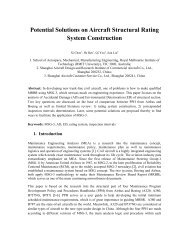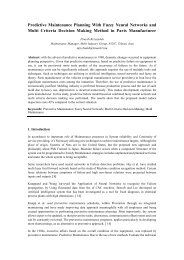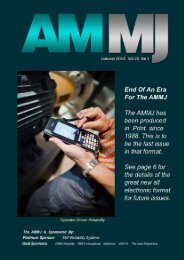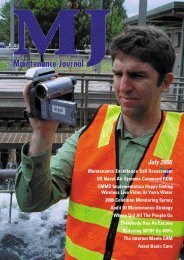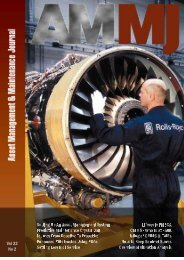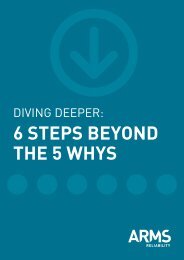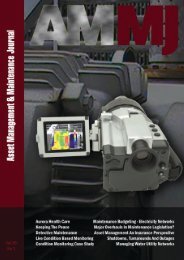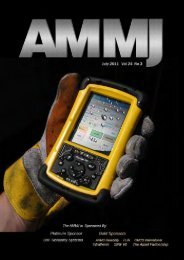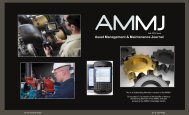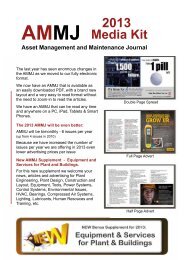DAY 1 - AMMJ
DAY 1 - AMMJ
DAY 1 - AMMJ
- No tags were found...
Create successful ePaper yourself
Turn your PDF publications into a flip-book with our unique Google optimized e-Paper software.
24World Class Asset Maintenancea process of continuous improvement, while competitors try and catch up in spurts. Being a derivativeof business focussed asset management, World Class Asset Management, fundamentally, mustdeliver the lowest whole lifecycle cost for the organisation (see Figure 1).For everypradigm shift,the total costofassetmanagementreduces by8-15%World Class Asset ManagementTPM, Reliability Centered MaintenancePredictive/Condition Based ManatenancePreventice MaintenanceReactive MaintenanceEnterprise wide impactWCAM is an enterprise-wide endeavour, spanning areas from strategy to operations, processes toactivities, senior management to the junior most operators and from finance to HR. Over 40% ofimprovement initiatives fall short of meeting expectations, primarily because there is insufficient buyin from all stakeholders. Getting a buy-in needs careful planning based on a thorough analysis of theimpact of change. WCAM institutionalises the mechanism required to facilitate change continuouslyand at every stage.Organisational Change ImperativesThe change process affects processes, technology as well as work culture. The main challengesfacing maintenance managers today according to John Moubray are:• To select the most appropriate techniques to deal with each type of failure in order to satisfy theowners of assets, users and society as a whole.• In the most cost-effective and enduring way• With the active support and cooperation of all those involved.A balanced approach that adequately addresses all three facets of change can make the differencebetween success and failure. An organisation has to be aligned towards identifying opportunities forimprovement and innovation in order to sustain evolution.A well-designed organisational structure can eliminate potential conflicts of interest and foster crossfunctionalcollaboration. Organisational flexibility makes it responsive to change. The ability to installand modify assets is the key to create new value streams identified based on changing customerrequirements.Organisations are inherently configured to maximise efficiency, which conflicts with the requirementsof a learning organisation. Managers rarely find time over and above their operational responsibilitiesto focus on planning and analysis. Large companies now have dedicated analysts to monitor KPIs,strategise and plan.Progress MeasurementAs the maxim goes – What is not measured does not get done. The essence of attaining nirvana inasset management lies in developing a clear roadmap to the target in a manner that the distancecovered can be measured at all times. The roadmap should articulate the areas of asset managementto be improved and performance measures to assess progress in each.<strong>AMMJ</strong> 20th ANNIVERSARY YEAR



